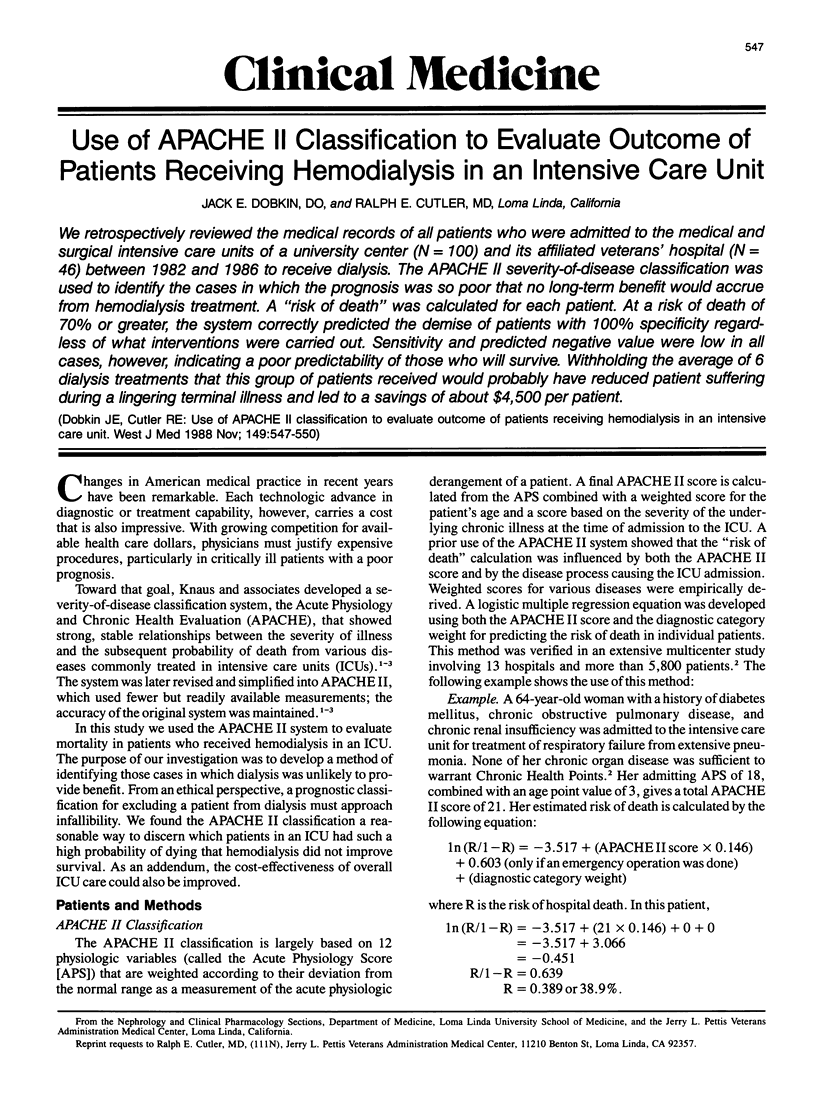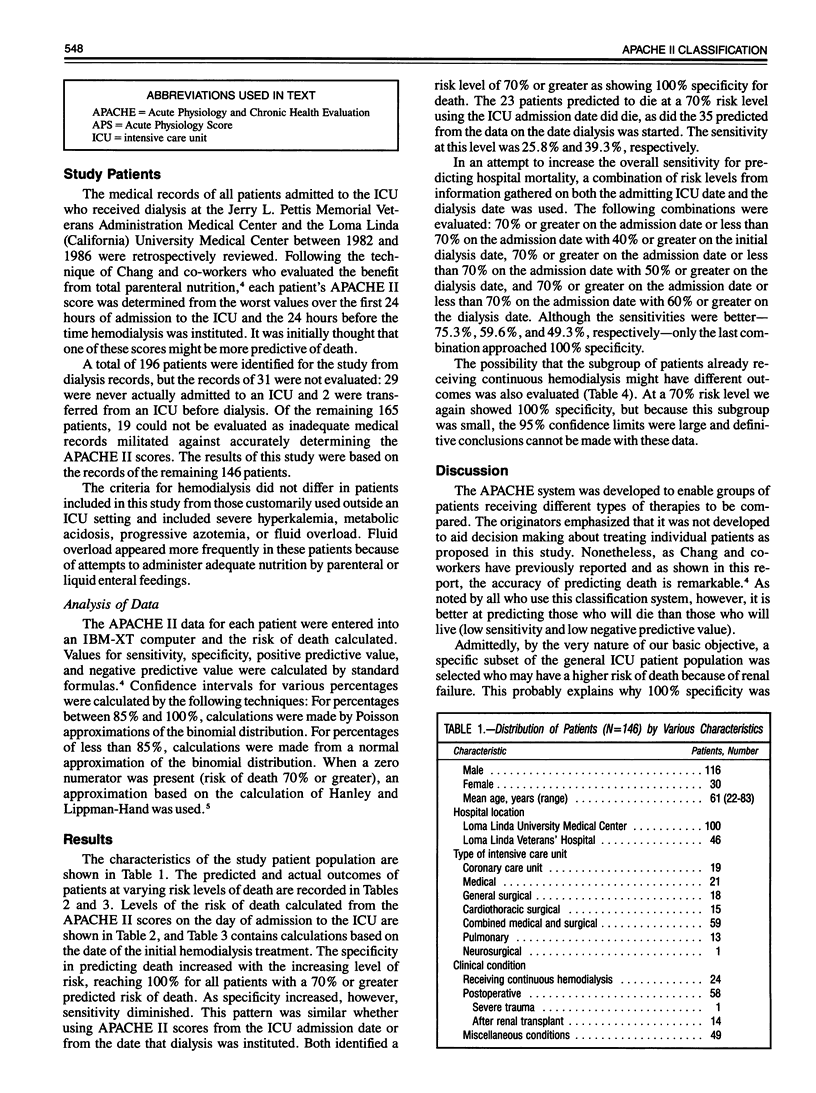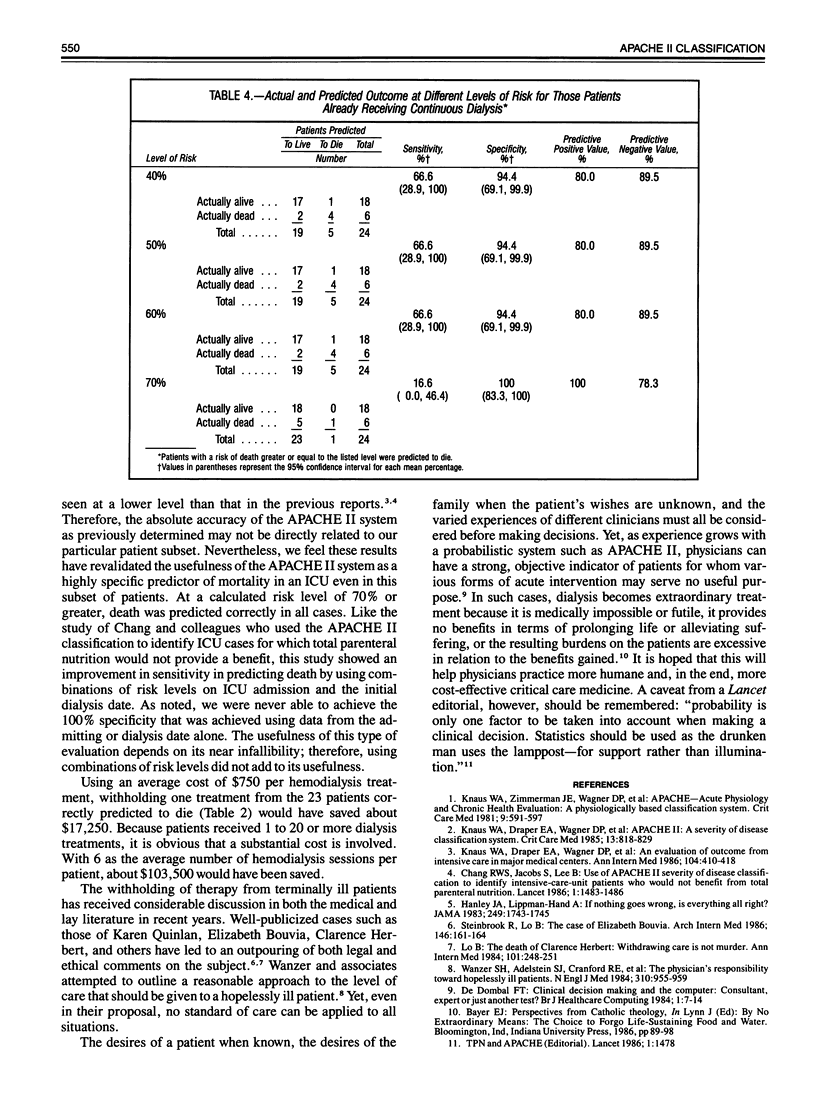Abstract
We retrospectively reviewed the medical records of all patients who were admitted to the medical and surgical intensive care units of a university center (N = 100) and its affiliated veterans' hospital (N = 46) between 1982 and 1986 to receive dialysis. The APACHE II severity-of-disease classification was used to identify the cases in which the prognosis was so poor that no long-term benefit would accrue from hemodialysis treatment. A "risk of death" was calculated for each patient. At a risk of death of 70% or greater, the system correctly predicted the demise of patients with 100% specificity regardless of what interventions were carried out. Sensitivity and predicted negative value were low in all cases, however, indicating a poor predictability of those who will survive. Withholding the average of 6 dialysis treatments that this group of patients received would probably have reduced patient suffering during a lingering terminal illness and led to a savings of about $4,500 per patient.
Full text
PDF



Selected References
These references are in PubMed. This may not be the complete list of references from this article.
- Chang R. W., Jacobs S., Lee B. Use of APACHE II severity of disease classification to identify intensive-care-unit patients who would not benefit from total parenteral nutrition. Lancet. 1986 Jun 28;1(8496):1483–1487. doi: 10.1016/s0140-6736(86)91511-4. [DOI] [PubMed] [Google Scholar]
- Hanley J. A., Lippman-Hand A. If nothing goes wrong, is everything all right? Interpreting zero numerators. JAMA. 1983 Apr 1;249(13):1743–1745. [PubMed] [Google Scholar]
- Knaus W. A., Draper E. A., Wagner D. P., Zimmerman J. E. APACHE II: a severity of disease classification system. Crit Care Med. 1985 Oct;13(10):818–829. [PubMed] [Google Scholar]
- Knaus W. A., Draper E. A., Wagner D. P., Zimmerman J. E. An evaluation of outcome from intensive care in major medical centers. Ann Intern Med. 1986 Mar;104(3):410–418. doi: 10.7326/0003-4819-104-3-410. [DOI] [PubMed] [Google Scholar]
- Lo B. The death of Clarence Herbert: withdrawing care is not murder. Ann Intern Med. 1984 Aug;101(2):248–251. doi: 10.7326/0003-4819-101-2-248. [DOI] [PubMed] [Google Scholar]
- Steinbrook R., Lo B. The case of Elizabeth Bouvia. Starvation, suicide, or problem patient? Arch Intern Med. 1986 Jan;146(1):161–164. [PubMed] [Google Scholar]
- Wanzer S. H., Adelstein S. J., Cranford R. E., Federman D. D., Hook E. D., Moertel C. G., Safar P., Stone A., Taussig H. B., van Eys J. The physician's responsibility toward hopelessly ill patients. N Engl J Med. 1984 Apr 12;310(15):955–959. doi: 10.1056/NEJM198404123101505. [DOI] [PubMed] [Google Scholar]


